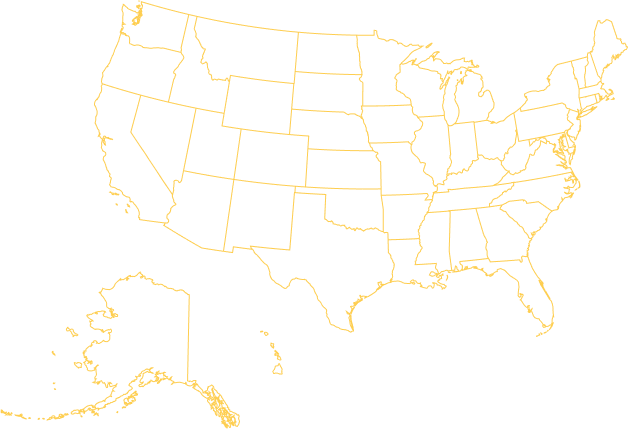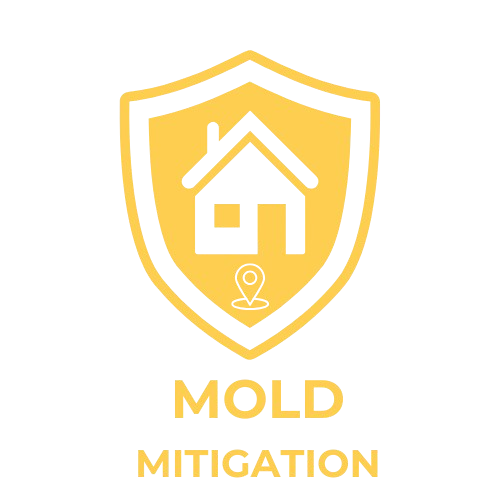Find Trusted Mold Mitigation Services Near You
Find and compare local mold remediation experts, read reviews, and get quotes

Get A Free Mold Quote Today
How It Works
Search for Mold Service
Enter your location to find mold remediation experts near you.
Compare Providers
View detailed profiles, read reviews, and compare services.
Request a Quote
Contact your chosen provider for a free consultation or estimate.
Top Mold Remediation Areas
Explore the leading areas for mold remediation services where demand is high. These regions are known for their robust support and effective solutions, ensuring you receive top-notch assistance. Whether you’re in need of quick fixes or comprehensive mold mitigation, we have the best options available to serve your needs.
Mold Solutions
Top Mold Services
We offer comprehensive mold remediation services tailored to your needs. Our experts utilize advanced techniques to identify, treat, and prevent mold growth effectively. Explore our offerings to find the best solutions for a healthier environment.
Mold Inspection
Our thorough inspections reveal mold issues at their root, allowing us to create a targeted remediation plan.
Mold Remediation
We execute effective mold remediation strategies that ensure complete removal and prevent future occurrences.
Air Quality Testing
We perform mold remediation to ensure thorough removal and prevent future growth issues.
Need Mold Removal Help? Find Trusted Professionals Near You Now!
Don’t Wait – Get Help with Mold Now
Your Mold Mitigation Questions Answered
How is a Mold Test Done?
Mold testing identifies potential mold growth in your home or business. According to the EPA, visible mold often doesn’t require testing; however, mold testing can be beneficial if you experience unexplained health symptoms, suspect hidden mold, or notice a musty odor. Mold testing costs are worthwhile if you need confirmation of mold presence for health or remediation purposes.
A professional mold test typically involves air and surface sampling, which should be conducted by a certified testing agency. The EPA recommends choosing an agency that follows standards from organizations like the American Industrial Hygiene Association or the American Conference of Governmental Industrial Hygienists to ensure reliable results.
If you suspect mold in your home, contact trusted inspection and removal experts for professional testing and remediation solutions.
What is Mold Remediation and How Does It Work?
Mold remediation is the process of detecting and safely removing mold colonies that pose health and structural risks in homes, offices, schools, and other buildings. Left untreated, mold can damage materials like wood and drywall, leading to decay, and can also cause respiratory and allergic health issues.
When mold is identified through visual inspection or testing, professional mold remediation ensures it is removed safely and effectively. Trained specialists use HEPA-filtered vacuums, air scrubbers, and antimicrobial treatments to contain mold spores and remove infested materials.
Here are typical steps involved in professional mold remediation:
- Containment: Set up barriers and apply negative air pressure with HEPA air purifiers to prevent spores from spreading.
- Antimicrobial Treatment: Spray an EPA-approved antimicrobial to kill mold spores.
- Material Removal: Remove and properly dispose of affected building materials.
- Dehumidification and Treatment: Treat underlayment, dry out cavities, and apply moisture control.
- Abrasive Cleaning: Remove loose mold remnants and dead spores.
- Protective Sealing: Apply a protective sealer to prevent future mold growth.
- Clearance Testing and Cleanup: Conduct final testing to confirm mold removal and remove containment.
After mold removal, addressing the source of moisture that caused the mold is essential to prevent regrowth. If you suspect mold in your property, consult experienced mold remediation professionals immediately.
Can Mold Grow Behind Drywall?
Yes, mold can grow behind drywall, as well as in attics, basements, under floors, and other hidden areas. Mold thrives in moist, dark environments, making drywall a common spot for hidden growth, especially if there has been water exposure from flooding, leaks, or high humidity.
Mold is often visible on surfaces, appearing as dark spots or patches, but hidden mold can be harder to detect. If you notice a musty smell or see mold growth on walls or furniture, it’s likely mold is also present in concealed areas like behind drywall. In such cases, mold remediation is typically needed.
For hidden mold concerns, consider consulting a professional who can assess and identify hidden mold issues, helping you ensure a healthy, mold-free home.
How Long Does It Take to Get Rid of Mold in a House?
Completely eliminating mold spores from a home is impossible, as small amounts naturally occur indoors. However, mold remediation can effectively remove harmful mold growth and prevent future infestations. Mold remediation usually takes between one to seven days, depending on the severity and spread of the mold.
Mold can begin growing within 24-48 hours of moisture exposure, so quick action is essential after a water leak or spill—especially in humid climates. Professional remediation teams assess the mold problem, address water sources, contain mold spores, safely remove contaminated materials, treat areas with antimicrobial sprays, dehumidify, and seal affected areas as necessary.
Prompt remediation helps protect your home and health by keeping mold at bay.
What Are the Signs There’s Mold in Your House?
Mold often grows in areas with high moisture, so if your home has had recent water damage or leaks, check those areas first. Visible signs of mold include patches in colors like white, gray, black, brown, or green, often appearing on walls, ceilings, under floorboards, or on materials like wood and wallpaper. Mold typically has a rough or velvety texture.
Another common indicator is a strong, musty, or earthy odor. Additionally, mold exposure may cause symptoms like asthma attacks (for those with mold allergies), runny noses, sneezing, itchy or watery eyes, breathing difficulties, and skin irritation.
If you suspect mold or experience related health issues, consider consulting both a mold remediation specialist and your healthcare provider.
Is Mold Damage Covered by Insurance?
Whether mold damage is covered by homeowners insurance depends on the cause. Insurance may cover mold remediation if it results from a covered incident, such as a sudden plumbing break that leads to water damage. In this case, your insurance could cover repairs and mold removal.
However, if mold damage is due to neglect—like a slow, unattended leak under a sink—insurers typically won’t cover remediation costs. Most standard homeowners policies also exclude mold damage from flooding unless you have specific flood insurance.
To prevent mold damage, keep indoor humidity between 30-60%, clean up water spills promptly, and use exhaust fans in kitchens and bathrooms. If you suspect mold, consult a professional mold removal service as soon as possible.
How Do You Get Rid of Mold?
Hiring a mold remediation professional is often the safest and most effective way to remove mold, especially for areas larger than 10 square feet (3×3 feet). Professional mold removal ensures the problem is fully resolved and helps prevent future growth.
For smaller mold issues (less than 10 square feet), the EPA suggests some DIY methods:
- Fix Water Leaks: Repair plumbing or water leaks immediately and dry the area completely to prevent mold from returning.
- Scrub Hard Surfaces: Use detergent and water to clean mold from hard surfaces, then dry thoroughly.
- Dispose of Moldy Materials: Discard porous materials like carpet and ceiling tiles if they are moldy, as they can hold spores.
- Avoid Exposure: Protect yourself and others by using proper safety equipment.
- Do Not Paint Over Mold: Clean and dry the surface before painting, as paint won’t adhere to moldy areas.
For valuable or delicate items, consult a specialist to ensure proper mold removal without damage. If in doubt, reach out to a mold remediation expert for safe and effective mold removal.
How Much Does It Cost to Get Rid of Mold?
The cost of mold inspection and remediation varies depending on the extent of mold damage. Typically, mold removal can range from $135 to $1,592. Key factors affecting mold remediation costs include the size of the affected area, accessibility, and any demolition or repairs needed.
Mold remediation teams may also have a minimum service fee, especially for small mold jobs, to cover business expenses. For an accurate estimate of mold removal costs in your home, consult experienced mold remediation professionals near you.
Can You Get Sick from Mold in Your House?
Yes, household mold exposure can lead to various health issues. According to the EPA, mold can cause respiratory symptoms such as allergies and asthma, as well as sneezing, runny nose, skin rashes, throat irritation, and even lung discomfort.
To protect your health, regularly inspect your home for signs of mold. If you notice a significant mold problem, contact a professional mold remediation company near you to safely address the issue.
What Do Professionals Use to Kill Mold?
Mold removal specialists often use biocides, enzyme treatments, and mold inhibitors to eliminate mold effectively. During the remediation process, they may also utilize air filtration devices, wire brushes, fans, dehumidifiers, air scrubbers, and HEPA vacuums to capture mold spores and prevent spread.
These tools and treatments ensure thorough mold removal and help maintain indoor air quality. To learn more about the process, reach out to top mold remediation companies near you.
What is the difference between mold removal and mold remediation?
Mold removal and mold remediation are terms often used interchangeably, but they refer to different processes in addressing mold issues. Understanding these differences is crucial for effectively managing mold problems in homes or businesses.
Mold Removal
Definition: Mold removal focuses on the physical elimination of visible mold from surfaces. This process typically involves cleaning and scrubbing areas where mold is present, using various cleaning solutions and techniques.
Limitations: While mold removal can address surface-level mold, it does not tackle the underlying causes of mold growth, such as moisture problems. As a result, even after visible mold is removed, it can quickly return if the conditions that allowed it to grow persist
Mold Remediation
Definition: Mold remediation is a more comprehensive process aimed at not only removing visible mold but also addressing the root causes of mold growth. This includes assessing and fixing moisture issues, removing contaminated materials (like drywall or insulation), and ensuring that mold levels are brought back to normal, safe levels
Process:
The remediation process typically involves several steps:
- Inspection and Assessment: Identifying the extent of mold damage and underlying moisture sources.
- Containment: Preventing the spread of mold spores during the remediation process.
- Air Filtration: Using special equipment to filter out airborne spores.
- Mold Removal: Physically removing mold and any contaminated materials.
- Cleaning and Sanitizing: Ensuring all affected areas are cleaned thoroughly.
- Restoration: Repairing any damage caused by mold
Key Differences
| Aspect | Mold Removal | Mold Remediation |
|---|---|---|
| Focus | Surface-level cleaning of visible mold | Comprehensive approach addressing root causes |
| Goal | Eliminate visible mold | Return mold levels to safe, normal levels |
| Longevity of Results | Often temporary; may lead to recurrence | More permanent; addresses moisture issues to prevent future growth |
| Process Complexity | Simpler; involves cleaning | More complex; includes inspection, containment, and restoration |
In summary, while both processes aim to deal with mold, mold removal is a quick fix, primarily targeting visible signs of mold without addressing underlying issues. In contrast, mold remediation is a thorough approach that ensures safety by tackling both the immediate problem and its causes, thus preventing future infestations
Is mold remediation worth it?
Investing in mold remediation can be worthwhile for several reasons, particularly concerning health, property value, and long-term cost savings.
Health Benefits
Mold exposure can lead to various health issues, including respiratory problems, allergies, and skin irritations. Professional mold remediation eliminates mold spores from the air and surfaces, significantly reducing these health risks. By creating a healthier living environment, you protect yourself and your family from potential complications associated with mold exposure
Property Preservation
Mold can cause significant damage to your home’s structure. If left untreated, it can weaken walls and ceilings, leading to costly repairs down the line. Mold remediation not only removes existing mold but also addresses the root causes of moisture that allow mold to thrive. This proactive approach helps preserve the structural integrity of your property
Increased Property Value
A mold-free home is more attractive to potential buyers and can command a higher sale price. Many buyers conduct thorough inspections, and the presence of mold can deter them or lead to lower offers. By investing in mold remediation, you enhance your property’s marketability and value
Cost Efficiency
While the initial cost of professional mold remediation may seem high, it can save you money in the long run. Ignoring mold issues often leads to more extensive damage that requires expensive renovations. By addressing the problem early through remediation, you prevent further damage and associated costs
Peace of Mind
Knowing that your home is free from mold provides peace of mind. Professional services ensure thorough removal and offer guidance on preventing future growth. This assurance allows you to enjoy a safe and healthy living environment without the worry of recurring mold issues
In summary, while mold remediation involves upfront costs, its benefits—improved health, property preservation, increased value, long-term savings, and peace of mind—often outweigh these initial expenses.
What are the 10 warning signs of mold toxicity?
Mold toxicity can manifest in various ways, affecting individuals differently based on their sensitivity and exposure levels. Here are 10 warning signs of mold toxicity to watch for:
- Respiratory Issues: Symptoms like coughing, wheezing, shortness of breath, and chest tightness are common indicators of mold exposure, particularly in individuals with asthma or respiratory sensitivities
- Allergic Reactions: These may include sneezing, runny or stuffy nose, itchy eyes, and skin rashes. Allergic rhinitis is often triggered by mold spores
- Fatigue and Weakness: Persistent fatigue that doesn’t improve with rest can be a sign of mold toxicity, as the body struggles to cope with the inflammatory response
- Neurological Symptoms: Cognitive issues such as brain fog, memory problems, headaches, and difficulty concentrating may arise due to the neurotoxic effects of certain molds
- Muscle and Joint Pain: Unexplained aches and pains in muscles and joints can occur as part of the inflammatory response to mold exposure
- Gastrointestinal Problems: Symptoms like nausea, diarrhea, or other digestive issues can indicate mold toxicity, particularly if accompanied by other signs
- Skin Irritations: Rashes or itchy skin can develop as an allergic reaction to mold exposure
- Mood Changes: Anxiety, depression, or mood swings may result from the stress of dealing with mold exposure or from direct neurotoxic effects on the brain
- Frequent Infections: Increased susceptibility to colds, flu, or sinus infections can occur due to a compromised immune system from prolonged mold exposure
- Persistent Sinusitis: Long-standing sinus issues or frequent sinus infections can be linked to mold in the environment, exacerbating existing conditions
Recognizing these signs early is crucial for addressing potential mold toxicity effectively. If you suspect mold exposure is affecting your health, consulting a healthcare professional is advisable for proper evaluation and treatment.
Can I remove mold myself?
Yes, you can remove mold yourself, but there are important considerations and guidelines to follow to ensure safety and effectiveness.
When You Can Remove Mold Yourself
- Small Areas: If the mold covers less than 10 square feet, it is generally safe for a DIY approach.
- Non-Porous Surfaces: Mold on hard surfaces like glass, tile, and metal can often be cleaned effectively by homeowners.
- No Vulnerable Individuals: Ensure that no children, elderly people, or immunocompromised individuals are in the vicinity during the cleaning process, as mold spores can exacerbate health issues.
Safety Precautions
- Protective Gear: Always wear gloves, a mask (preferably N95 or better), and safety goggles to protect against mold spores and cleaning agents.
- Ventilation: Open windows and use fans to improve air circulation while cleaning to minimize inhalation of spores.
Recommended Cleaning Methods
- White Vinegar: A natural cleaner that can kill about 82% of mold species. Spray undiluted vinegar on the affected area, let it sit for an hour, then wipe clean
- Hydrogen Peroxide: Use a 3% solution in a spray bottle. Saturate the moldy area, let it sit for 10 minutes, then scrub and wipe dry
- Baking Soda: Mix 1/4 tablespoon of baking soda with water in a spray bottle. Spray on the moldy area, scrub, rinse with water, and let it dry
- Lemon Juice: The acidity in lemon juice can help break down mold. Apply freshly squeezed lemon juice to the area, let it sit for a few minutes, then wipe clean
Steps for DIY Mold Removal
- Identify and Prepare: Locate all areas affected by mold and gather your cleaning supplies.
- Moisten Surfaces: Lightly mist the area with water before cleaning to prevent spores from becoming airborne.
- Clean Thoroughly: Apply your chosen cleaning solution and scrub the affected surfaces.
- Dry Completely: After cleaning, ensure the area is thoroughly dried to prevent future growth.
- Dispose of Contaminated Materials: If any materials (like carpets or drywall) are heavily infested and cannot be cleaned, double-bag them in heavy-duty plastic bags for disposal
When to Call Professionals
If you encounter extensive mold growth (over 10 square feet), suspect toxic mold (like black mold), or if the problem persists after your efforts, it’s advisable to consult a professional mold remediation service. They have specialized equipment and expertise to handle larger infestations safely and effectively.In summary, while DIY mold removal is feasible for small infestations on non-porous surfaces, always prioritize safety and know when to seek professional help for more serious issues.
Latest Blog
- 26 Oct, 2024
- coolmikrop
- Travel
- 26 Oct, 2024
- coolmikrop
- Business
- 26 Oct, 2024
- coolmikrop
- Travel
- Los Angeles Mold Remediation
- Miami Mold Mitigation
- Houston Mold Removal
- New York City Mold Inspection
- Chicago Mold Mitigation
- Atlanta Mold Remediation
- Seattle Mold Inspection
- Phoenix Mold Removal
- Denver Mold Mitigation
- Las Vegas Mold Inspection
- Boston Mold Removal
- Philadelphia Mold Testing
- Portland Mold Inspection
- Detroit Mold Removal
- San Francisco Mold Removal
- Orlando Mold Remediation
- Dallas Mold Remediation
- Buffalo Mold Remediation
- Springfield Mold Removal
- Savannah Mold Testing
- Spokane Mold Remediation
- Tucson Mold Inspection
- Colorado Springs Mold Removal
- Henderson Mold Remediation
- Worcester Mold Mitigation
- Pittsburgh Mold Remediation
- Salem Mold Testing
- Grand Rapids Mold Remediation
- San Diego Mold Inspection
- Tampa Mold Testing
- Austin Air Quality Testing
- Rochester Mold Testing
- Naperville Air Quality Testing
- Augusta Mold Removal
- Tacoma Air Quality Testing
- Mesa Mold Remediation
- Aurora Air Quality Testing
- Reno Mold Testing
- Springfield Mold Inspection
- Allentown Mold Removal
- Eugene Mold Mitigation
- Ann Arbor Air Quality Testing



